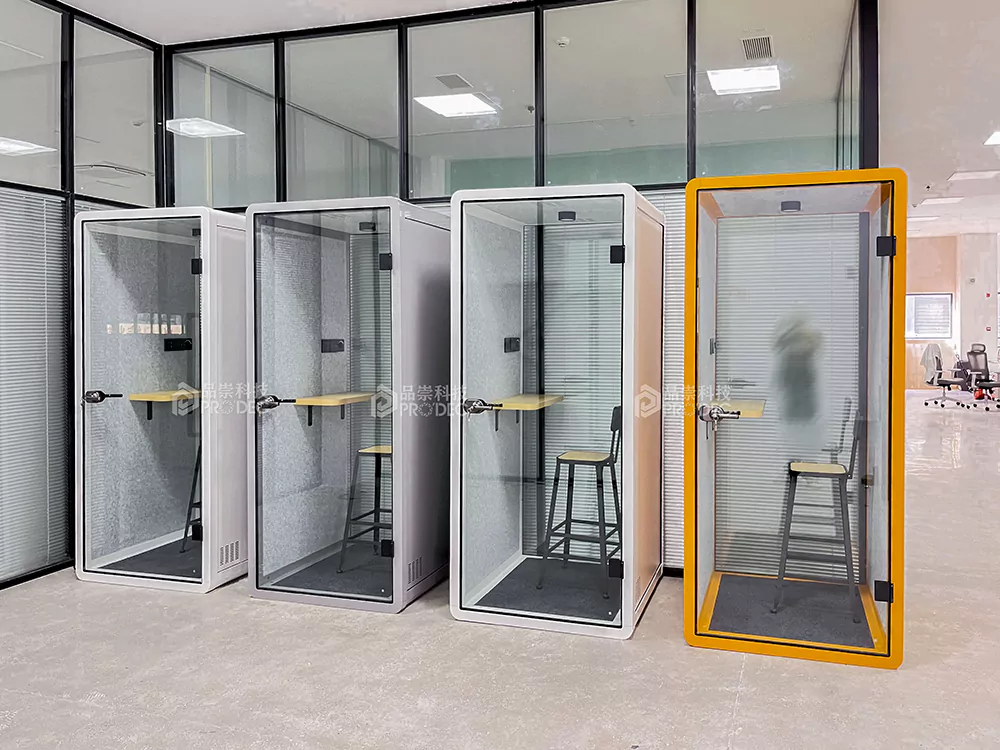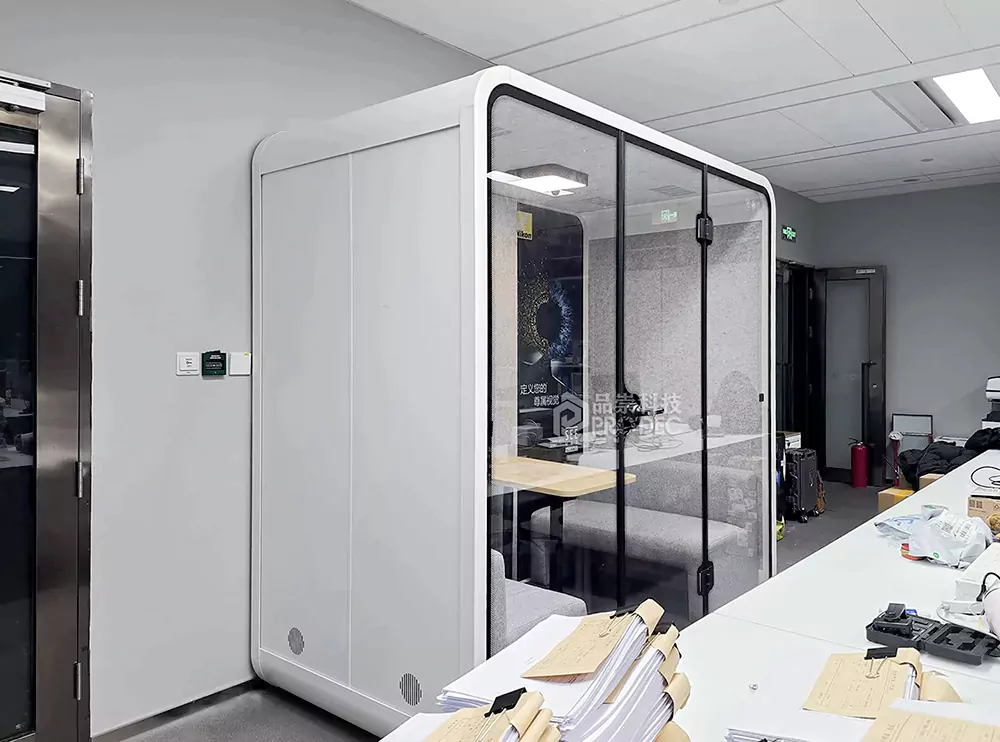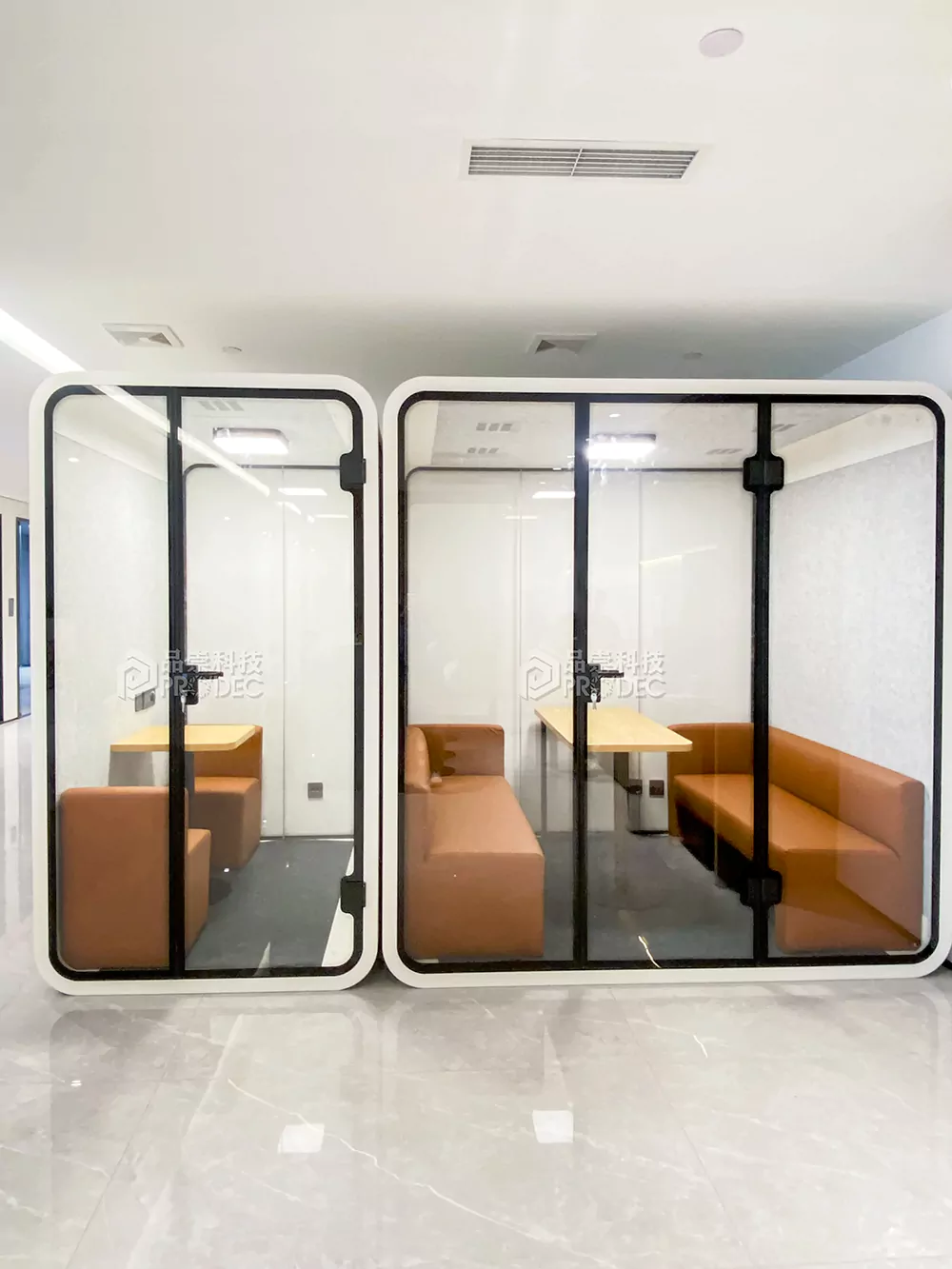Acoustic Booth: Reducing Background Noise in Streaming
Why Background Noise Ruins Your Stream and How an Acoustic Booth Solves It
In the competitive world of live streaming, audio quality is just as critical as video resolution. Unwanted background noise—such as traffic, HVAC systems, household activities, or room echo—can severely degrade the listening experience, leading to viewer drop-off and reduced engagement. An acoustic booth for reducing background noise in streaming offers a scientifically engineered solution by creating a controlled acoustic environment. These booths utilize multi-layered soundproofing materials, including mass-loaded vinyl, acoustic foam, and decoupled wall structures, to block external noise and absorb internal reflections. By isolating the sound source (the streamer), these enclosures ensure that microphones capture only clean, direct vocal input. This results in professional-grade audio clarity, essential for gaming, podcasting, music performance, and virtual events.

Step-by-Step Guide to Setting Up Your Acoustic Booth
Step 1: Assess Your Space and Streaming Needs
Before purchasing an acoustic booth, evaluate your available space and intended use. Determine whether you need a full-body enclosure or a compact vocal booth. Consider factors such as ceiling height, door clearance, and proximity to noisy appliances.
Step 2: Choose the Right Size and Configuration
Select a model that fits your body dimensions and equipment layout. Most standard acoustic booths range from 4×4 feet to 6×8 feet. Ensure there’s enough room for your chair, desk, microphone stand, and any additional gear.
Step 3: Select High-Performance Soundproofing Materials
Look for booths constructed with dense composite panels containing materials like mineral wool, acoustic foam, and vibration-damping membranes. These layers work together to achieve high STC (Sound Transmission Class) and NRC (Noise Reduction Coefficient) ratings.
Step 4: Install Proper Ventilation and Lighting
An enclosed space can become stuffy and dark. Integrate silent inline fans with acoustic ducting for airflow and install LED lighting with adjustable color temperature to maintain visual comfort during long sessions.
Step 5: Optimize Internal Acoustics with Absorption Panels
Even within a sealed booth, sound reflections can occur. Add broadband absorption panels at first reflection points and behind the speaker to minimize flutter echo and standing waves.
Step 6: Position Your Microphone Correctly
Use a boom arm to place the mic 6–12 inches from your mouth, slightly off-axis to reduce plosives. A pop filter is still recommended even inside an acoustic booth.
Step 7: Calibrate Audio Input Levels
Set your audio interface gain so that peak vocal levels reach around -6 dBFS, leaving headroom for dynamics without clipping.
Step 8: Test for External Noise Leakage
Run a test stream or recording while generating noise outside the booth (e.g., closing a door). Use a spectrum analyzer to check for low-frequency transmission through weak points like seams or ventilation ports.
Step 9: Implement Cable Management Solutions
Route all cables through grommets or shielded conduits to prevent RFI (Radio Frequency Interference) and maintain a clean aesthetic.
Step 10: Perform Regular Maintenance Checks
Inspect seals, hinges, and acoustic panels monthly for wear. Clean surfaces with non-abrasive wipes to preserve material integrity and hygiene.
Key Features of a High-Efficiency Acoustic Booth
A top-tier acoustic booth for reducing background noise in streaming must balance sound isolation, user comfort, and technical integration. Critical features include:
- Double-Wall Construction: Two layers of dense material separated by an air gap significantly increase sound attenuation.
- Sealed Door System: Magnetic or compression seals prevent sound leakage around the entry point.
- Internal Diffusion/Absorption Hybrid Design: Combines bass traps, mid-range absorbers, and diffusers to manage frequency response evenly.
- Modular Assembly: Enables easy transport and reconfiguration in different environments.
- EMI/RFI Shielding: Protects sensitive audio electronics from electromagnetic interference.
Advanced models now incorporate IoT-enabled environmental controls, allowing remote monitoring of temperature, humidity, and internal noise levels via smartphone apps.
Comparative Analysis: Standard Room vs. Acoustic Booth Performance
The difference between a typical untreated room and a dedicated acoustic booth is profound. Below is a comparison of key performance metrics:
| Metric | Untreated Room | Acoustic Booth |
|---|---|---|
| Background Noise Level (dB) | 45–60 dB | 20–25 dB |
| Reverberation Time (RT60) | 0.8–1.5 seconds | 0.2–0.3 seconds |
| Speech Clarity Index (STI) | 0.45–0.55 | 0.75–0.90 |
| External Noise Reduction | Minimal (STC ~25) | High (STC 45–55) |
| User Comfort & Focus | Moderate (distractions present) | High (isolated environment) |
Real-World User Feedback on Acoustic Booth Effectiveness
Customer testimonials highlight the transformative impact of using an acoustic booth for reducing background noise in streaming. One professional podcaster shared:
“Before installing the booth, I spent hours editing out dog barks and street noise. Now, my recordings are pristine straight from the mic. My audience retention has increased by 40%.” — Sarah L., Podcast Producer
Another user, a Twitch gamer, noted:
“I used to get complaints about echo during intense gameplay commentary. Since moving into the acoustic booth, my viewers say my voice sounds ‘studio-level clear.’ It’s made a huge difference in sponsor interest.” — Mark T., Live Streamer
Advanced Integration: Smart Technology in Modern Acoustic Booths
Next-generation acoustic booths go beyond passive sound control. They integrate smart systems that enhance usability and performance:
- AI-Powered Noise Detection: Sensors identify residual noise sources and adjust internal damping dynamically.
- Voice-Activated Lighting: Lights turn on/off based on voice activity, conserving energy and enhancing immersion.
- Automated Climate Control: Maintains optimal temperature and humidity for both human comfort and equipment longevity.
- Remote Monitoring Dashboard: Displays real-time acoustic performance data, including SPL (Sound Pressure Level) and frequency balance.
These features make modern acoustic booths not just soundproof rooms, but intelligent ecosystems tailored for digital content creation.
Cost-Benefit Comparison: DIY Treatment vs. Pre-Fabricated Acoustic Booth
While some creators attempt to treat existing rooms with DIY methods, pre-fabricated acoustic booths offer superior and more predictable results. The table below illustrates this contrast:
| Factor | DIY Room Treatment | Pre-Fabricated Acoustic Booth |
|---|---|---|
| Initial Cost | $200–$800 | $1,500–$5,000 |
| Noise Reduction Efficiency | Moderate (10–15 dB) | High (25–35 dB) |
| Installation Time | 5–10 hours | 1–3 hours (modular kits) |
| Mobility & Reusability | Low (permanent fixtures) | High (portable units) |
| Consistency of Results | Variable (depends on skill) | Guaranteed (engineered design) |
| Maintenance Requirements | High (re-tuning needed) | Low (pre-calibrated system) |
Best Practices for Maximizing Acoustic Booth Performance
To fully leverage your acoustic booth for reducing background noise in streaming, follow these expert recommendations:
- Position the booth away from walls: Leave at least 6 inches of space around the unit to prevent mechanical coupling and bass buildup.
- Use a grounded power conditioner: Prevents electrical noise from affecting audio signals.
- Avoid overloading the interior: Keep unnecessary objects out to maintain consistent acoustic behavior.
- Calibrate your monitoring system: Use reference headphones or studio monitors inside the booth to accurately assess output.
- Update firmware regularly: For smart booths, ensure software is up-to-date for optimal sensor and control performance.
- Train yourself to speak efficiently: Even in a quiet space, poor mic technique can degrade quality—practice breath control and diction.
By combining proper setup with disciplined usage, you can achieve broadcast-level audio consistency across all your streaming content.
本文由人工智能技术生成,基于公开技术资料和厂商官方信息整合撰写,以确保信息的时效性与客观性。我们建议您将所有信息作为决策参考,并最终以各云厂商官方页面的最新公告为准。






